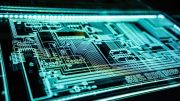Dean Challinor, General Manager at Distec, and Mr. HY Chiou, CEO of Wincomm Corp, discuss the role of medical PCs in improving patient outcomes from a distance
It is no secret that the COVID-19 pandemic has radically changed how we live our daily lives, and that life in the future will never return to our pre-pandemic idea of normal. The digital world has been a lifeline for many, and our use of digital methods for things like shopping, remote working and accessing healthcare have dramatically increased.
The need to reduce interaction between the public was clear from the start of the pandemic, to limit potential exposure to the covid-19 virus. This was especially important in healthcare to protect those with compromised immune systems who were accessing the healthcare system for other reasons. This need to protect people especially in a medical setting meant that services moved online. As a result of this shift, many of the digital technologies that were being slowly introduced into the industry were fast-tracked, becoming the norm for many patients and clinicians and in some cases even the sole method of delivering healthcare. Far more emphasis was put on technologies such as medical imaging systems, OCT solutions and smart disease control solutions. Now, as we move out of the pandemic many of these changes are here to stay, altering the medical profession forever.
However, questions remain around the most effective way to utilise these digital tools, particularly medical PCs, as we move back to a more balanced delivery of healthcare.
What makes a Medical PC?
Medical PCs differ from normal PCs in a variety of ways. Different suppliers may offer models with tailored functionality for specific roles, but unifying factors are adherence to an international standard for electromagnetic and radiation emissions that determine the devices safe for near-patient uses, and an antimicrobial component that makes them a more hygienic option for a healthcare setting.
We are seeing these PCs being used as a point of contact more extensively during the pandemic. Features like AI powered ultrasound imaging can dramatically accelerate processing for diagnostic information, taking it instantly from the hospital floor to a central server. This allows hospitals to gather and analyse data much faster, which in turn frees up clinician’s time and speeds up treatment processes. The high-powered processing facilities cater to the demand for immediate information across departments.
Applications
Medical PCs can be used in any location within doctors’ offices or hospitals. They can be positioned at nurses’ stations or at patients’ bedsides to aid in timely data logging or used in consultation rooms for GPs and specialists. A well-connected panel PC will give medical professionals instant access to the data that they need, such as medical records, x-ray images and hospital schedules, without the need to go through time consuming administrative processes.
Having several connected PCs across a hospital facility also helps to create a more integrated healthcare strategy. Staff are given a greater degree of oversight, allowing them to see real-time changes across the hospital and utilise that data to deliver the best possible healthcare. This helps to improve patient outcomes across the board and gives doctors and nurses the tools and information to treat their patients effectively.
Edge computing and AI in healthcare
The pandemic has forced medical professionals to change their practices and offer remote services as often as possible to limit infection. A move towards panel PCs has allowed them to embrace other technologies and computing methods such as AI and edge computing, making this forced change in hardware an exciting catalyst to a more modern medical practice.
Edge computing is a form of distributed computing that is similar in some ways to cloud computing but puts more emphasis on bringing computation and data storage closer to the sources of the data themselves. In effect, it is a way of constructing an architecture that brings everything closer together within the computing system and eliminates unnecessary processes that waste time and weigh the system, and staff, down. This helps to speed up response times, dramatically accelerate trend analysis, and save bandwidth. While this form of computing is used a great deal in other sectors such as manufacturing or finance it is also incredibly useful in healthcare.
This was helpful during the pandemic as doctors sought to treat people remotely as much as possible. Now in a hospital setting, it helps to improve response times for data such as diagnoses, x-rays, test results etc. This helps hospitals to run as smoothly and efficiently as possible giving doctors quick information that they can use to treat their patients.
Another digital technology that has been accelerated into mainstream use during the pandemic is AI. There are already a wide range of use cases, with AI being used to detect and diagnose cancer, diagnose, and treat illnesses based on patient symptoms, diagnose blood diseases, analyse radiology imaging scans, develop new medicines, treat rare diseases, and process clinical trial predictions.
AI can give doctors solutions that are both fast and trustworthy. This means that they can make decisions and diagnoses quickly and effectively based on information that can be gathered and fed into the algorithm. Once AI has helped staff to make these decisions, the information can be uploaded quickly using the edge computing model and viewed universally on the panel PCs. Doing this can speed up the care pathways for the patient and as the results of these decisions are logged in the same way, the AI will use this to refine the algorithm and improve future decision making. With all these technologies working in harmony digital transformation can change how healthcare is delivered for the better. Promoting speed and efficiency without adversely affecting efficacy.
What’s next for healthcare in the digital space?
What medical professionals have been able to achieve during the pandemic, under immense pressure, is truly laudable. While there have been unfortunate setbacks in many areas owing to the diversion of resources to fight COVD-19, we have also seen a staggering degree of resourcefulness. The speed of digital transformation over the past two years has shown what is possible in the healthcare sector when everyone works towards a common goal. Post pandemic we can expect to see a more measured and refined approach to continuing this development, with many more exciting new practices on the horizon to improve patient outcomes and staff experience.





